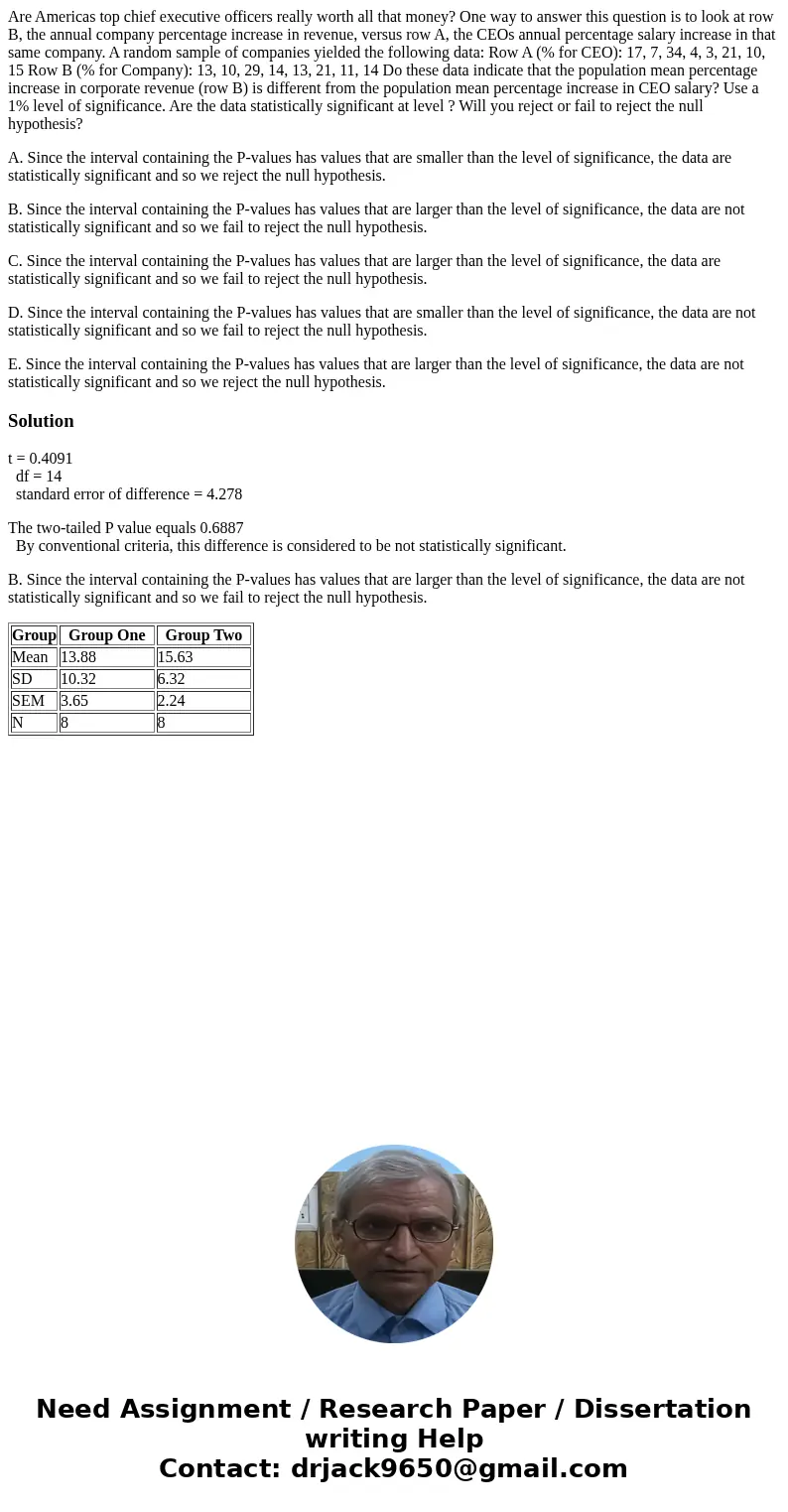Are Americas top chief executive officers really worth all t
Are Americas top chief executive officers really worth all that money? One way to answer this question is to look at row B, the annual company percentage increase in revenue, versus row A, the CEOs annual percentage salary increase in that same company. A random sample of companies yielded the following data: Row A (% for CEO): 17, 7, 34, 4, 3, 21, 10, 15 Row B (% for Company): 13, 10, 29, 14, 13, 21, 11, 14 Do these data indicate that the population mean percentage increase in corporate revenue (row B) is different from the population mean percentage increase in CEO salary? Use a 1% level of significance. Are the data statistically significant at level ? Will you reject or fail to reject the null hypothesis?
A. Since the interval containing the P-values has values that are smaller than the level of significance, the data are statistically significant and so we reject the null hypothesis.
B. Since the interval containing the P-values has values that are larger than the level of significance, the data are not statistically significant and so we fail to reject the null hypothesis.
C. Since the interval containing the P-values has values that are larger than the level of significance, the data are statistically significant and so we fail to reject the null hypothesis.
D. Since the interval containing the P-values has values that are smaller than the level of significance, the data are not statistically significant and so we fail to reject the null hypothesis.
E. Since the interval containing the P-values has values that are larger than the level of significance, the data are not statistically significant and so we reject the null hypothesis.
Solution
t = 0.4091
df = 14
standard error of difference = 4.278
The two-tailed P value equals 0.6887
By conventional criteria, this difference is considered to be not statistically significant.
B. Since the interval containing the P-values has values that are larger than the level of significance, the data are not statistically significant and so we fail to reject the null hypothesis.
| Group | Group One | Group Two |
|---|---|---|
| Mean | 13.88 | 15.63 |
| SD | 10.32 | 6.32 |
| SEM | 3.65 | 2.24 |
| N | 8 | 8 |

 Homework Sourse
Homework Sourse